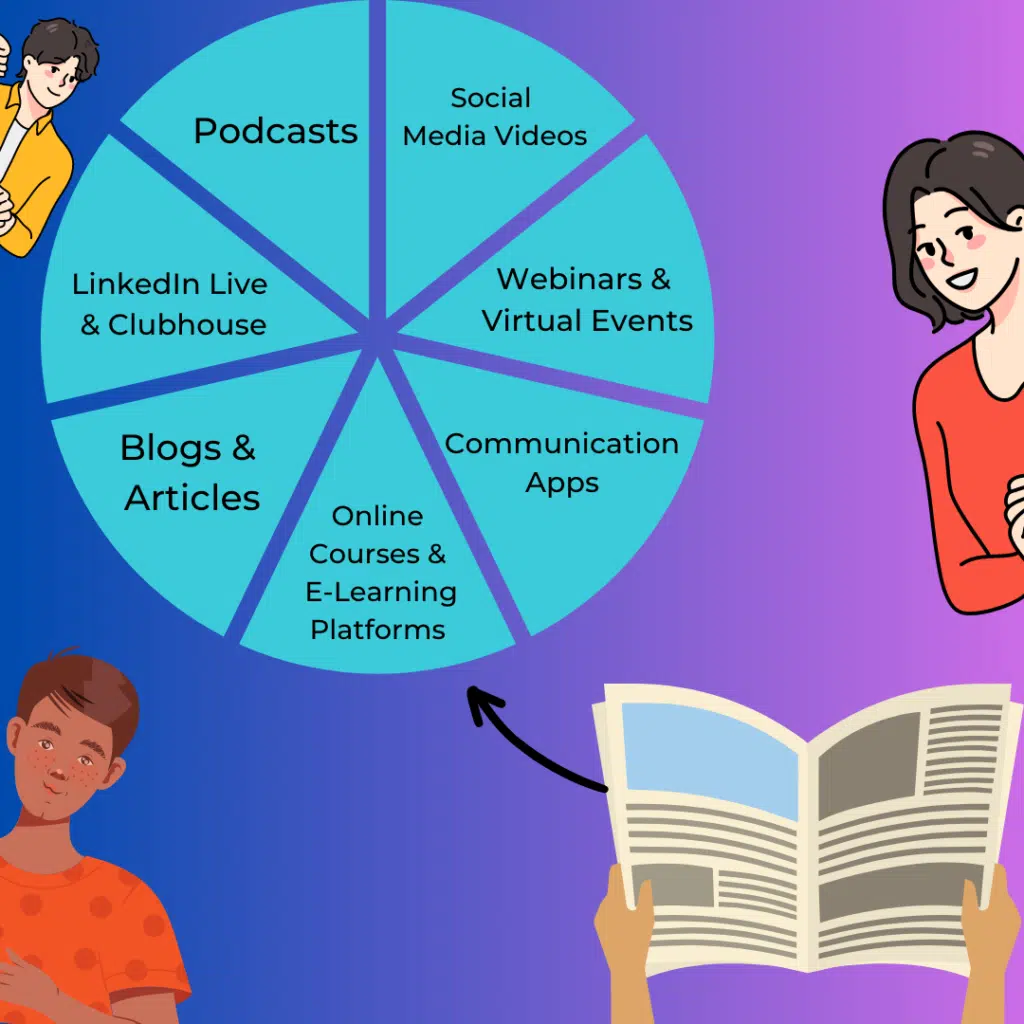
Blog, Leadership, Vocal Leadership
The Four Critical Levels of Being a Great Communicator & Why They Matter
By Jess Todtfeld, President of Success In Media, Inc.
As we navigate the ever-evolving digital landscape, it's crucial to remember the significance of personal connection, especially in leadership roles.
After dedicating the past 18 years to teaching media training skills and presentation skills, I've come to realize that the essence of leadership is found in speaking – in connecting with people face-to-face, or in today's climate, virtually. Yes, we've adapted, we've embraced technology, but as leaders, we must not forget that at the heart of every interaction, there's a human need to connect.

The modern world presents a unique challenge: How do we maintain this essential human connection amidst the screens and devices that dominate our lives? The answer lies in understanding the power of speech in leadership and harnessing it effectively.
Speaking as a leader isn’t just about giving orders or delegating tasks. It’s about engaging people, sharing visions, inspiring actions, and fostering a spirit of teamwork. And achieving these goals requires mastering The Four Critical Levels of Being a Great Communicator: Understanding, Remembering, Action, and Passing on to Others. These stages serve as the foundation of impactful leadership speaking.
- Understanding: The first step to effective communication is making sure your message is understood. This requires clear, concise language free from jargon or complicated concepts. As a leader, you need to deliver your message in a way that your team, clients, or audience can easily grasp. The clearer your message, the better the understanding, and the stronger the connection you can establish.
- Remembering: A message that's understood but quickly forgotten will achieve little. To make your message stick, stories are invaluable. They weave a narrative around your message, turning it from mere information into a memorable journey. Remember, people may forget statistics or figures, but they rarely forget a compelling story.
- Action: Great communication isn’t passive; it drives action. Once people understand and remember your message, they should feel motivated to act upon it. As a leader, your words should empower others, giving them the tools or knowledge they need to improve their lives or make a difference.
- Passing on to Others: The ultimate level of communication is when your message is shared by those who heard it. Word of mouth is one of the most powerful forms of communication. When someone shares your message, it signifies a deep connection – they found your words impactful enough to pass on to others.
In a world where face-to-face interactions are increasingly being replaced by face-to-screen encounters, the need for leaders to effectively communicate and connect with others has never been more paramount. True leaders don’t just speak – they connect, inspire, and motivate. They use their words to create shared understanding, memorable narratives, actionable insights, and messages that resonate deeply enough to be passed on.
Here’s some good news…

We have more opportunities than ever to speak and connect. These include:
Podcasts: In an era where multimedia content is increasingly popular, starting your own podcast can be a great way to share your insights, experiences, and messages. Podcasts create a personal, intimate setting, allowing for more in-depth discussions and providing an opportunity to connect with your audience on a deeper level. They offer a unique space where you can share your stories, inspire action, and get your messages passed on.
Social Media Videos: Platforms such as Instagram, Facebook, YouTube, LinkedIn, and TikTok have become vital tools for modern leaders. Social media videos allow for dynamic, engaging communication. You can share short motivational messages, elaborate on complex ideas, or give behind-the-scenes glimpses into your leadership journey. These videos are easy to share, increasing the chances of your message being passed on and reaching a wider audience.
Webinars and Virtual Events: As we adapt to a more remote way of working, webinars and virtual events have become commonplace. These platforms offer an opportunity to reach larger, global audiences. They also allow for real-time interaction, Q&As, and instant feedback, helping you gauge understanding and tweak your communication strategies accordingly.
Communication Apps: Apps such as Slack, Microsoft Teams, or Zoom have revolutionized the way we connect with our teams and peers. These apps provide a space for both formal and informal communication, promoting transparency and fostering a sense of community.
Blogs and Articles: Writing blogs and articles for your own website or guest posting on other platforms is another way to connect. You can delve into subjects in more detail and leave a permanent resource for others to refer back to.
Online Courses and E-Learning Platforms: Sharing your expertise through online courses or e-learning platforms can help inspire action. You can educate your audience on a particular subject, provide them with the tools to make positive changes, and continue to foster their growth long after they've finished your course.
LinkedIn Live and Clubhouse: Platforms like LinkedIn Live and Clubhouse offer live audio and video broadcasting opportunities. They allow real-time conversations with audiences, which can lead to lively discussions, idea exchanges, and networking opportunities.
As leaders, it's our responsibility to bridge the digital divide and maintain the human connection that's so vital in our world today. By mastering these four levels of communication, we can transcend the boundaries of the screen and connect with people in meaningful, impactful ways. And in the process, we can redefine what it means to be a leader in the digital age.
What most surprised you, or what do you still want to know? Let us know your thoughts below!
More About Jess Todtfeld
Jess Todtfeld is the President of Success in Media, one of the leading communication and media training authorities in the U.S. With more than 15 years as a media trainer and consultant, Todtfeld helps CEOs, business executives, spokespersons, public relations representatives, experts, and authors to become more confident, more in control, and to create more results from their speaking engagements and media appearances.
If you want to learn more about Jess Todtfeld, you can visit his training site or his Guaranteed Publicity agency, Media Ambassadors.


Create a Professional and Profitable Audiobook!
The Insiders Guide to Audiobook Production gives you the inside track to create a high-quality and effective audiobook and reach a much larger new audience.
Thank you!
Please check your inbox for your email.
If you don't see anything in a few minutes, please check your spam folder.

Leave a Reply